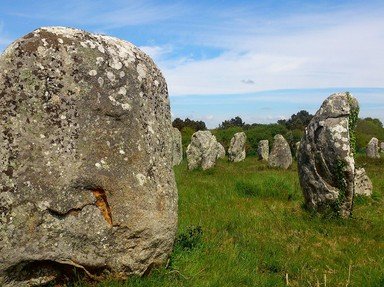Quiz Answer Key and Fun Facts
1. Many ancient fossils discovered in India gave proof that the Homo erectus species was present in India around 200,000 years ago. There was one specific fossil which was discovered along the banks of a river and was given a name to indicate this. What was this fossil initially called?
2. Most representations and supportive evidence of the presence of ancestral humans in the Indian subcontinent during Paleolithic time comes from which of the following?
3. Sohanian culture was present in the Indian subcontinent in the Lower Paleolithic. What is the 'godly' name of the hills where many Sohanian sites are present, giving an indication that humans lived there during prehistoric times?
4. The Acheulean culture did not spread to which part of India during the Lower Paleolithic?
5. Rock shelters are said to have been used by the Acheulean folks at various places of their geographic extent in India. Located in one of the biggest states of India, one such place is the Raisen district where the Bhimbetka rock shelters are found. In which Indian state are these rock shelters located?
6. The Acheulean people never lived in open-air setups in the Indian subcontinent.
7. The Acheulean people most commonly used which of the following materials to make tools in their sites in India?
8. There was another Lower Paleolithic culture which formed part of the Acheulean industry. It was given a specific name due to the proximity of its type site - Attirampakkam - to the capital city of Tamil Nadu. What was the name of this culture?
9. In a region called Patne, in Maharashtra, India, some of the earliest evidence of art during the Upper Paleolithic age has been discovered. What was this evidence?
10. A shrine-like structure cut out of rock was found in the Baghor II, which was a site in Son valley with evidence of inhabitation during the Upper Paleolithic period. The evidence found seemed to indicate the existence of something specific during that period. What was it?
Source: Author
Saleo
This quiz was reviewed by FunTrivia editor
ponycargirl before going online.
Any errors found in FunTrivia content are routinely corrected through our feedback system.
